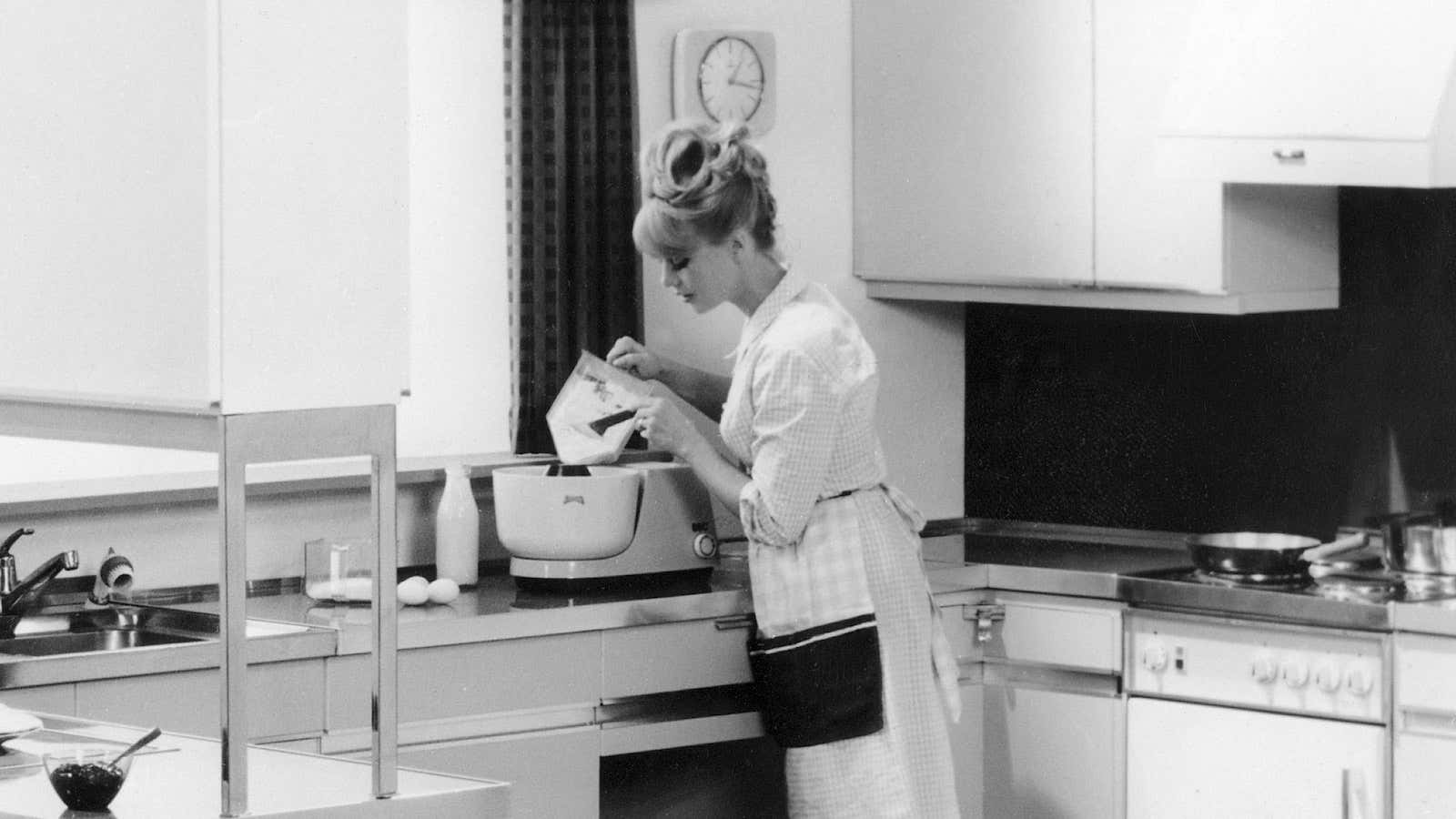For many years, Hollywood has dreamed up science-fiction stories featuring human relationships with machines. As these entities further intertwine in many ways—from the use of machines to augment people to the use of artificial intelligence to understand them—they are revolutionizing the way gender factors into labor structures.
Society is now in the throngs of what is being called the fourth industrial revolution, also known as the second machine age or industry 4.0. We are combining physical, digital, and biological realms to create exponential change at a rate and scale we have only ever seen in science fiction—and gender-specific roles may change along with it.
The first industrial revolution introduced the modern construct of gender, stereotyping men as “breadwinners” and women as “homemakers.” Since then, two more industrial revolutions have followed, both of which have reinforced these sexist tropes. We have now arrived at the fourth—and this revolution has the opportunity to dismantle gender stereotypes all together.
You say you want a revolution?
The first industrial revolution in the mid 1700s changed the trajectory of humanity in ways we are still trying to fully comprehend. Technological advancements powered this revolution, specifically the use of water and steam to mechanize production. This made it possible to greatly increase our use of natural resources and mass-produce goods in what was the most important event since the domestication of animals and the advent of modern agriculture. The second industrial revolution quickly followed in the late 1800s, which introduced the use of electricity and assembly lines to create mass production. By 1969, we were in a third revolution, sometimes called the digital revolution, using information technology and electronics to automate production.
The first industrial revolution catapulted a generation from an agrarian and handicraft economy to an industrial economy, significantly redefining the societal roles of men, women, and children in its wake. It led to the development of workspaces such as factories where peasants could earn a salary and change their circumstances. This gave rise to the working and middle classes. These factories began to sort men, women, and children into roles that suited the work that had to be accomplished, including utilizing women and children in cramped spaces because of their smaller size, or using men for heavy lifting because of their more robust strength.
In her book Gender, Work and Wages in Industrial Revolution Britain, Joyce Burnette shows that market forces—not discrimination, as it is now—were the largest driver in gender differences in occupations and wages: “Most historians attribute occupational sorting by gender to some form of discrimination. However, this conclusion is too hasty if we have not first explored whether a non-discriminatory labor market would produce the observed results.”
As industry brought about the rise of the working and middle classes, it also brought about poor working conditions: dark overcrowded factories, machines that covered workers in soot, very little focus on safety. This led to accidents and disease. Restrictions were therefore placed to protect women and children from these environments. Up until then, women and children were often an equally valued part of the workforce, but now that working conditions had changed, they were discouraged from taking part in the industrial economy for the safety of their families.
With children sent off to school instead of working in the factories and men bearing the brunt of hard labor, women (who were historically double-burdened, bearing responsibility for unpaid domestic labor in addition to their paid workload) were left at home to handle the house work. As one salary was enough to take care of a family unit, the stereotypes of the “breadwinner” and “homemaker” took hold, as well as that of the “domestic sphere,” where women were expected to focus on taking care of the house and family.
The times, they are a changin’
In the first industrial revolution, craftsmen who were valued for their ingenuity and creativity were replaced by workers who were valued for their physical strength and quick acquisition of skills. Today, they are being replaced more and more by machines (particularly AI and robotics) that can handle repetitive tasks and do the heavy lifting in our factories. The fourth industrial revolution is therefore poised to reverse the gender stereotypes created by the first, putting the emphasis back on human talent with ingenuity and creativity, not on traditionally masculine skillsets.
Today’s humans are co-evolving with machines. I refer to this as the “exponential human” or the “xHuman”. Along with this new mode of being comes the concept of a “gender-neutral economy”: a “post-gender” world resulting from the bio-machine nature of the fourth industrial revolution, where our relationships to machines and each other, not our sex, defines our work.
In the fourth industrial revolution, success is found in the on-demand production of customized things, and talent is becoming the most valuable asset. This may well be the antithesis of the first industrial revolution, where the mass production of uniform things drove success, and therefore physical strength was more highly valued than human ingenuity. In an economy based less on capital than talent, women are more likely to be treated as equals to foster an environment where there are fewer obstacles to talent acquisition and retention.
With the exponential nature of this revolution increasing the fluidity of roles, functions, and industries, stressing reliance on human talent—regardless of gender—will become the norm. And as people become the new competitive advantage, organizations will stop reinforcing gender roles in order to fuel an unprecedented race for the best talent.
The gender-based limitations of the old order will fast become obsolete. The most successful companies in the future may be those that eliminate gender-stereotypes in favor of post-gender structures, allowing them to innovate and grow. If this is what the fourth industrial revolution brings, then bring it on.
